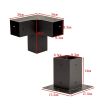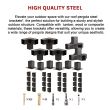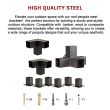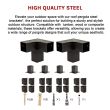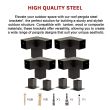It has happened to most of us at some point just as the party is really getting started, the host runs out of alcohol. Well, that’s piss poor planning. . Nowadays running dry is far less of a snag than it used to be – a restock is only an app click away – “Your order has been accepted.†“Your order is on its wayâ€ÂÂ. Fantastic – let’s get this show back on the road again. But, over at the House of Suntory where the festivities have been underway for several years now, there are some serious supply issues. The delivery app is showing “expected sometime in 2030â€ÂÂ; what little booze there is remaining feels like a shadow of what was served earlier on; and the clamouring guests just keep on arriving in ever greater numbers. The toilet is blocked, someone’s been sick on the cat, and to top it all off, most of the newly arriving guests only seem interested in nabbing the doggie bags and then beating a hasty retreat.
Despite Japanese distilleries hitting the re-supply button some years ago, I worry that by the time the order actually arrives, and inventories return to levels where stock allocations are not entirely miserly, that there might not be anyone left around to actually care.
I was fortunate enough to discover a wealth of Japanese whisky before the hype train departed the station (nowadays, it’s not even in the same province). And in being able to freely explore the category, I was awed by both the differences, but also the fundamental similarities to Scotch whisky. But nowadays, I wonder how many new enthusiasts have jumped on the same bandwagon – and promptly jumped off feeling uninspired or financially unable to explore wider?
In a lot of cases, sampling ‘not Japanese, Japanese whisky’ is likely enough to raise a confused shrug – “can’t see what all the fuss is aboutâ€ÂÂ. In others, there is rapid realisation that in order to properly dive into Japanese whisky some pretty deep pockets are going to be required. Bottles which I once purchased for £70 are now being sold for 10x that price. And these bottles are the ones which inspired my love of Japanese whisky – the expressions which persuaded me to broaden my explorations. But with the price of these gateways into ‘real’ Japanese whisky now being largely unobtanium to most ‘normal’ folk, I’m already seeing new entrants to whisky largely eschewing the Japanese producers. Choice is ever-broadening – and whereas once Japan was but one of a few producing nations – now it is one of many.
Over the last few years, productions have been expanded. New distilleries have been opened, and stock has been laid down at a pace at which Japan has never seen before. And yet that in itself feels like it might cause another problem for the industry down the line.
The current levels of mature Japanese whisky are nowhere near enough to sate the market – a market which is arguably now driven by casual and serial investors. But once inventories have been restored there is going to be an immeasurably larger quantity of whisky to shift. Not only more than before the Japanese whisky boom took hold. More than ever before. The investment into production is not just a flash in the pan to achieve an equilibrium – it is a long-term venture which will increase the overall whisky output of the country by several factors. Year after year. My question and point being – can interest in Japanese whisky grow at a similar rate? And how can this be realised during a period where there’s a crowded house, but little alcohol to share around the guests?
There’s a real danger for Japanese producers that once the long-term enthusiasts, flippers and investors have had their fill of the restored inventories, that years of dearth will have produced a wider market who don’t really care in quite the same ways that I did earlier in my whisky exploration. I’ve been ‘out’ of the Japanese market for a number of years now – I’ve purchased little to nothing. And I’m under no illusions that when the gates are opened once more – the party will have an entirely different vibe to 10 years ago.
Whilst I would expect the secondary market prices for some bottles to fall as more whisky is made available, RRPs are *not* going to settle back down to where they were. Japanese whisky is not suddenly going to become a cheap alternative – that would undo 20 years of hard work. But at the same time, there will come a point where there’s simply a lot more juice sloshing around.
Are new enthusiasts going to be interested in that at higher prices than they can access from a growing number of producers elsewhere in the world? Will the hype of the last few years be potent enough that they feel unable to resist? Will Japanese whisky still be cool at that point? Or will the industry potentially have to look at another huge investment in brand education – only this time not just internally in Japan – but globally? Either way, that’s going to require a lot more invites to the party.
Hibiki Blender’s Choice was released domestically in Japan in 2018. But rather than the fanfare which one would expect for a new addition to a much-loved range – the release felt bittersweet to Japanese whisky fans. With the arrival of Blender’s Choice came the discontinuation of the excellent Hibiki 17 year old – and yet another nail in the coffin of Japanese age statement whiskies. The release was something of an odd one – the bottling is relatively easy to find in Japan’s bars, but far less common to see on the shelves of retail stores. For all intents and purposes the expression has been largely destined for the on-trade – which is one method for ensuing that bar-goers can get their fix of Hibiki but does nothing for screeching retail customers.
As such, whilst the price of Blender’s Choice was set at 10,000 yen (notably only 2,000 shy of Hibiki 17’s RRP), retailer markups are horrific across the board. And this is compounded even further if you’re attempting to purchase a bottle outside of Japan. The best price I have been able to locate here in the UK is via Bordeaux Index at £124.38. Notably less than most – but nevertheless a sum which is twice the cost in Yen. The release is an NAS which is noted online to average out at around 15 years of age in terms of its constituents. As such, there’s some younger stuff and some older stuff in the mix, including a selection of wine casks. It is bottled at the range standard 43% ABV.
Nose: Plums and tart damsons upfront, alongside orange liqueur and jammy red berries. A vinous character runs throughout – leafy wine and hot house stems and vines. Brighter fruits develop in the glass – cinnamon and mango, whilst cedar wood and cinnamon provide an aromatic lift to cask-led vanilla rice pudding. Reduction presents dried apricots alongside an almost sherbet-like quality and apple blossoms.
- Packaged liquor license: 31962467
- We support the responsibley service and drinking of alcohol
- It is an offence to sell liquor someone who is below 18 years of age.
- Buyers must be at least 18 years old and be able to purchase alcohol legally in your area.
- If you are re-selling, you must have a liquor license that allows you to sell liquor.
- It is an offence to sell liquor without the appropriate liquor license.


